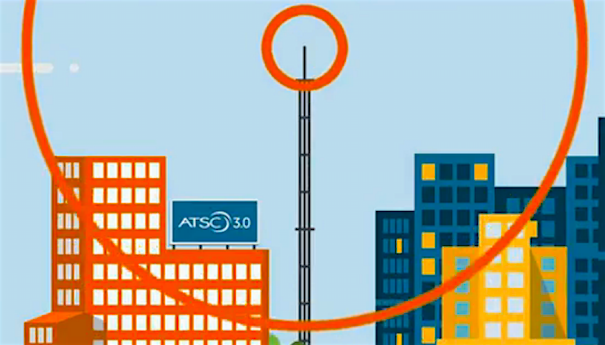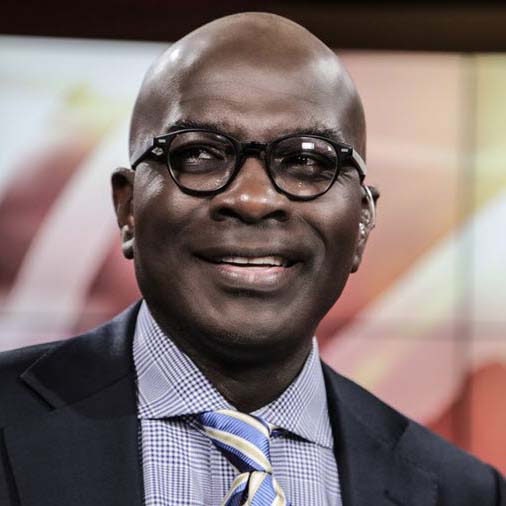How NextGen TV Could Bridge Digital Divides
ATSC 3.0 receivers need to be required in more digital devices

WASHINGTON—Cable TV operators, satellite service providers, and the behemoth telcos are happy to sell everyone their TV program service—to the tune of $217 per month on average, according to research firm Decision Data. That’s about the same as the average bill for all major utilities combined (electricity, gas, water, sewage and garbage). If you can’t afford that, like many in minority and underserved communities, too bad.
Luckily there is an alternative, and it’s free. Over-the-air TV is not only still available and free, but with recently developed and approved new technology, broadcasters will be providing new services to parts of the market written off by pay TV providers. No more “let them eat cable!”
NextGen TV is based on a new technological standard—ATSC 3.0—established by the Advanced Television System Committee as the newest version of over-the-air TV. It allows viewers to have a truly amazing array of services, starting with ultra-high definition (4K) video and immersive audio delivering beautiful pictures and sound. It is IP (internet protocol) based, but no internet access is required for it to work. It allows distance-learning channels with no buffering or pixelating and targeted emergency alerts that are not blocked because the cell phone system is down during a storm or overloaded in a crisis. Best of all, it does not need to be anchored to a TV set on your wall at home—it can be available to mobile devices as well—in your car, on your laptop and on your phone.
NEXTGEN TV FOR EVERYONE
This technology is now being incorporated into some new high-end TVs. That’s good as far as it goes. But what if you can’t afford an expensive TV? To make these services available to everyone—including those most in need and who can’t afford pay-TV service in minority and underserved communities—the technology needs to be in all receiving devices: TVs, laptops, tablets and phones. This is what the FCC and Congress need to move on.
Similar to the All-Channel Receiver Act of 1962, where the FCC required all television set manufacturers to include UHF tuners, not just VHF tuners, so the UHF band (then channels 14 to 83) could be received by all, broadcast receiver chips should be mandated for all laptops, tablets and cellphones. Broadcast (TV and radio) receiver chips cost less than $5 and would open to everyone the remarkable benefits afforded with the ATSC 3.0 standard.
Receiver chips in mobile phones and computers would empower all of us to use this free over-the-air NextGen technology directly with the electronic device we use. Just imagine, no internet access required, classrooms broadcast to your TV or phone, targeted disaster and emergency alerts and information tied to your location, and sent in multiple languages. And, if the FCC and Congress won’t move on this, the president should consider advancing this crucial public service pursuant to the Defense Production Act, which allows him to influence the domestic industry in the interest of national security.
When a disaster (natural or terrorist) hits, such as 9/11, earthquakes, fires, hurricanes, tornadoes and floods, communication networks are too often overloaded. The massive number of instant users during a crisis paralyzes the phone system. That’s the nature of the cellphone system designed to create a one-to-one connection. The broadcast system, on the other hand, has a one-to-infinite architecture that can never be overloaded.
The professional video industry's #1 source for news, trends and product and tech information. Sign up below.
Many are recognizing that outages are becoming more and more frequent within the telephone infrastructure. Telcos are also subject to hostile takedowns or the migration of malicious code from other systems. Emergency systems lack interoperability or range, as was the case during the 2011 earthquake in Washington, D.C., or the California fires and other catastrophes. Based on its large area coverage and high-power/high-tower infrastructure, NextGen TV would extend the limited coverage area of first responders, allow remote data and information access during emergencies, and provide for backup due to loss of communication networks during a cyber-attack on communication systems.
NextGen broadcast also provides a highly dependable signaling allowing device “wakeup” and deep indoor penetration, coverage due to loss of the first responder network (FirstNet) during catastrophes, and is compatible with the cellular network Advanced Emergency Alerting & Informing (AEA&I) system.
MANY SIDE BENEFITS
There are other important side-benefits to the NextGen system. The ability to transmit multiple highly robust broadcast signals provides a basis for building an alternate, terrestrial positioning capability or secondary “GPS” system. Along with positioning comes a secondary precision timing system, which would further protect time-critical functions such as Wall Street trading and financial transactions.
Finally, NextGen broadcasting is capable of providing location augmentation and a terrestrial-focused Wide Area Augmentation System (WAAS) for use by autonomous vehicles and truck freight. That means enhanced tracking of driverless cars and package delivery services. It’s not your father’s broadcast TV anymore.
Those without access to pay-TV services should not be relegated to a permanent second-class life. How many kids during this pandemic who didn’t have reliable internet connections missed out on classes that could be broadcast to a TV in the house or to areas with spotty connectivity? And when there’s a school shooting and the cellphone network melts from overwhelming demand, wouldn’t it be great for everyone to have access to shelter information, evacuation routes and hear it in multiple languages? ATSC 3.0 will be available to 100% of the U.S. population.
Armstrong Williams is manager and sole owner of Howard Stirk Holdings I & II Broadcast Television Stations and the 2016 Multicultural Media Broadcast Owner of the Year.

